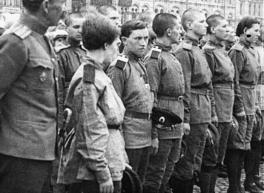Women's Battalions
Women’s Battalions were special combat units formed in the Russian Army after the February Revolution. They consisted of female volunteers in an effort to support the army and boost morale. They were extremely loyal to the Provisional Government.
This was not a completely new idea, however – female volunteers began to serve in the Russian Army long before February 1917. For example, the movement’s founder, Maria Bochkareva, joined the army back in 1914 – Tsar Nicholas II personally granted her permission.
Studying Bochkareva’s life before she joined the forces can provide a good idea of what made a female volunteer in the Russian Army. Bochkareva (born Frolova) came from a poor family of farmers, and moved to Siberia with her husband, although his drinking problem kept them in poverty. Bochkareva left her husband for a local butcher, Yakov Buk, who was involved in serious criminal activities
